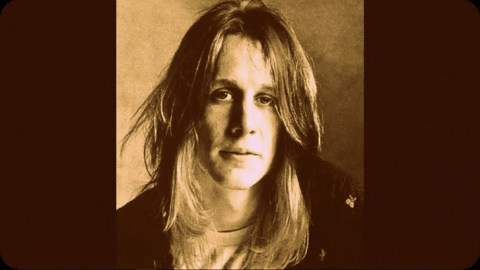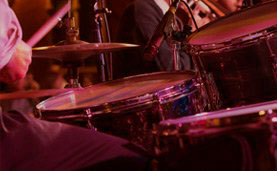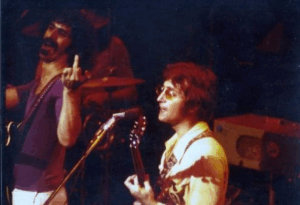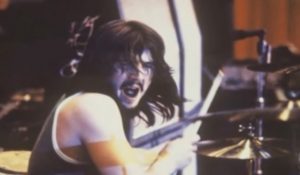Relive And Listen To 7 Songs From Todd Rundgren

via @ TheDREAMSDEMON / YouTube
Few artists have managed to leave such a distinct and eclectic mark on music like Todd Rundgren. His approach was never about following trends but creating moments—melodic, emotional, and experimental—that continue to resonate with listeners across generations. Whether behind the microphone or the mixing console, his work always carried an unmistakable signature: bold, layered, and full of soul.
Throughout his career, Rundgren balanced the raw edge of rock with the finesse of pop, soul, and even progressive sounds. He didn’t just write songs—he sculpted them. His ability to weave vulnerability into complex arrangements and then turn around with an unapologetically catchy anthem is what makes his catalog both impressive and deeply personal.
In this article, we revisit seven songs that highlight not just his talent, but his fearlessness in music. These aren’t just tracks—they’re snapshots of an artist constantly pushing the boundaries of what a song could be.
View this post on Instagram
7. “All The Children Sing”, Hermit of Mink Hollow (1978)
“All The Children Sing” opens Hermit of Mink Hollow with a nostalgic and optimistic tone that perfectly captures the essence of Todd Rundgren’s later ‘70s sound. The song bursts in with layered vocals, bright piano, and a subtle melancholy beneath its cheery surface—a clever balance Rundgren always excelled at.
This track marked a return to Rundgren’s solo roots, following his work with Utopia and other production ventures. In many ways, Hermit of Mink Hollow was a personal and musical reset, and “All The Children Sing” acts as a reminder of his ability to craft something deeply introspective yet inviting.
What makes it especially memorable is how deceptively simple it sounds. The arrangements are rich, the vocal harmonies complex, yet it all feels effortless. That’s the magic of Rundgren—he makes the intricate feel natural, and the personal feel universal. This song is a reminder that sometimes, going inward leads to the most outwardly resonant music.
6. “Black Maria”, Something/Anything? (1972)
“Black Maria” is a bluesy powerhouse buried deep within Something/Anything?, and it’s one of those songs that makes you sit up and listen—hard. It’s Rundgren at his most guitar-driven, gritty, and raw. The track is thick with emotion and musicianship, reminding listeners that he wasn’t just a studio wizard—he could wail with the best of them.
This is Rundgren flexing his rock chops, offering a taste of power that contrasted beautifully with the pop and soul elements across the rest of the album. It gave Something/Anything? an unexpected edge, and it gave fans something heavier to hold onto. The guitar solos, layered textures, and dark tone make “Black Maria” a hidden gem in an already stacked record.
What’s striking is how Rundgren handles it all himself. As with most of Something/Anything?, he plays nearly every instrument, showcasing not just songwriting genius, but multi-instrumental mastery. “Black Maria” is both a curveball and a statement—Todd could do it all, and he could do it loud.
5. “A Dream Goes On Forever”, Todd (1974)
“A Dream Goes On Forever” is one of Todd Rundgren’s most emotionally resonant tracks, a delicate blend of synth-pop and heartfelt balladry. Released on his 1974 album Todd, the song carries a wistful beauty, capturing the feeling of chasing something intangible—whether love, youth, or a fleeting moment of happiness.
The minimalist arrangement allows Rundgren’s lyrics and melody to shine. There’s a vulnerability here that draws the listener in without trying too hard. It’s this subtlety that makes it so timeless; Rundgren isn’t forcing sentiment—he’s just letting it unfold, like a quiet reflection at the end of a long day.
Even decades later, “A Dream Goes On Forever” still feels fresh, partly because its themes are so universal. Everyone has something they long for, something just out of reach. Rundgren turned that feeling into music, and the result is a song that lives on far beyond its original release—just like the dream it sings about.
4. “I Saw The Light”, Something/Anything? (1972)
As the opening track to Something/Anything?, “I Saw The Light” wastes no time in showing just how sharp Todd Rundgren’s pop sensibilities really were. It’s melodic, warm, and endlessly catchy—a song that could’ve easily come from the golden age of Brill Building pop but still sounds relevant today.
The tune is pure pop perfection, reminiscent of Carole King and Burt Bacharach, yet stamped with Rundgren’s unique lyrical charm. His vocals glide effortlessly over the steady rhythm and glittering keyboards, and the chorus feels like a hug. For a song that came out in the early ‘70s, it manages to capture the spirit of both the past and the future of pop.
Its simplicity is deceptive. Rundgren plays all the instruments here, arranging every note with care. “I Saw The Light” is the kind of song that makes songwriting seem easy—even though it rarely is. It’s no wonder this track remains one of his most beloved and enduring.
3. “We Gotta Get You A Woman”, Runt (1970)
Before the world really knew Todd Rundgren, there was “We Gotta Get You A Woman”—a breakout track that cracked the Top 20 in the U.S. and Canada. Released on his 1970 debut album Runt, the song is a quirky mix of pop, soul, and sly humor that instantly caught ears and turned heads.
The lyrics, while playful, reveal Rundgren’s early knack for storytelling. There’s something earnest beneath the song’s casual delivery, hinting at a deeper understanding of relationships and identity. It walks the line between charming and introspective—a balance that would come to define much of his work.
More than anything, this song announced Rundgren as a singular voice in rock. He wasn’t just another singer-songwriter; he had something different to say and a different way to say it. “We Gotta Get You A Woman” gave us the first real glimpse of the artist behind the curtain—and fans were eager to hear more.
2. “Hello It’s Me”, Something/Anything? (1972)
“Hello It’s Me” may have started as a Nazz track in 1968, but it wasn’t until Rundgren re-recorded it for Something/Anything? that it became a true classic. This version, smoother and more soulful, skyrocketed him into the mainstream and remains one of his most recognized and cherished songs.
There’s something universally relatable in the song’s quiet yearning. Rundgren doesn’t belt—he gently confides, making it feel intimate, almost like a late-night phone call to someone you never really got over. That emotional honesty is part of what makes the song timeless.
Musically, it’s lush without being overdone. The chord progressions are unexpected, the vocal harmonies graceful, and the production just warm enough to wrap around you. “Hello It’s Me” isn’t just a hit—it’s a reminder that vulnerability in music is powerful when it’s real.
1. “Can We Still Be Friends”, Hermit of Mink Hollow (1978)
There’s a bittersweet ache that runs through “Can We Still Be Friends,” and that’s exactly what makes it so enduring. Featured on Hermit of Mink Hollow, this 1978 ballad captures the emotional gray area that follows a breakup—when you’re not angry, but you’re not okay either.
Rundgren’s vocal delivery is restrained, almost conversational, which suits the lyrics perfectly. He’s not begging, and he’s not blaming—he’s just asking a simple, heartfelt question that so many people have silently wondered themselves. That honesty cuts deeper than any grand romantic gesture.
It became one of his most commercially successful singles, and with good reason. It’s catchy without being cloying, sad without being heavy-handed. “Can We Still Be Friends” is Todd Rundgren at his most human—and that’s what makes it unforgettable.


















